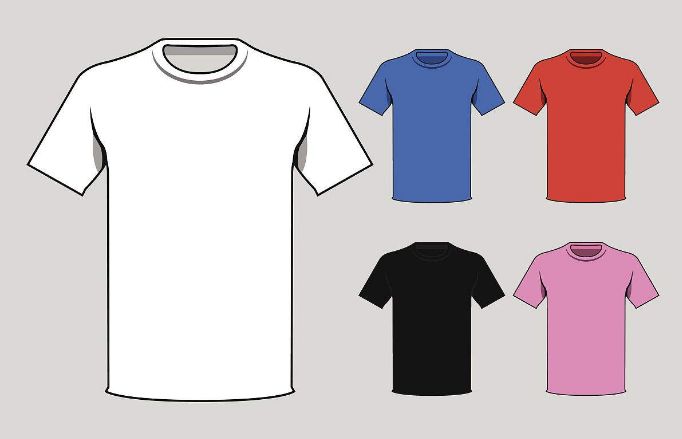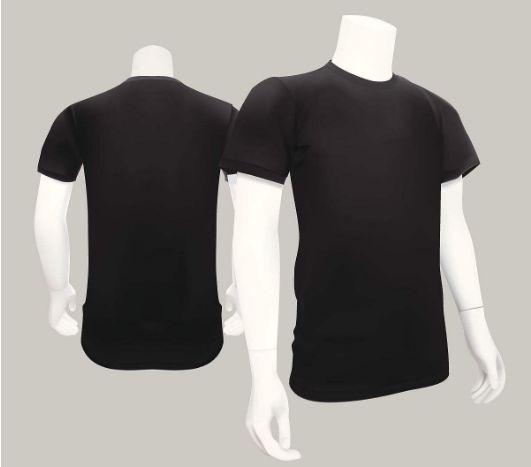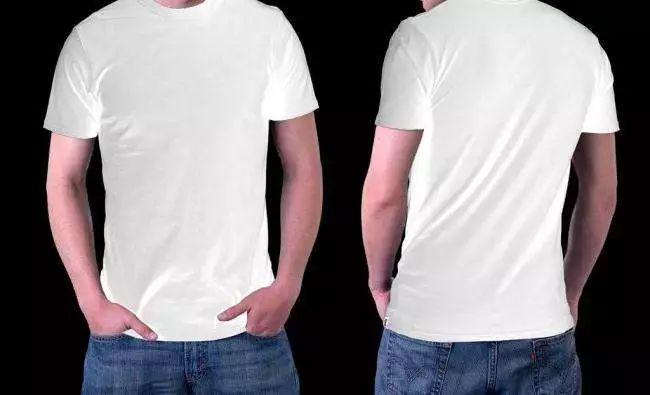
01 What is gram weight?
Gram weight is generally used to represent fabrics The greater the thickness, the thicker the clothes. The weight of T-shirts is generally between 160 grams and 220 grams. If it is too thin, it will be very see-through, and if it is too thick, it will be stuffy. Generally, the weight of T-shirts is between 180 and 280 grams. (Short-sleeved shirts are generally made of 180-220 grams, which is just the right thickness to wear. Long-sleeved T-shirts are generally made of 260 grams of fabric, which is a thickened type)
02 What is count?
Definition: The common weight is the number of lengths of cotton yarn weighing one pound.
Coarse count yarn: pure cotton yarn with a count of 18 and below, mainly used for weaving thick fabrics or pile and loop cotton fabrics.
Medium count yarn: 19-29 count pure cotton yarn. Mainly used for knitted garments with general requirements.
Fine count yarn: 30-60 count pure cotton yarn. Mainly used for high-grade knitted cotton fabrics. The higher the thread count, the softer it is. T-shirts are generally 21 and 32 threads.
03 What is combed?
T-shirt cotton yarn can be divided into carded , combed yarn.
Carded yarn: refers to yarn spun by carded spinning process, also called uncombed yarn.
Combed yarn: refers to yarn produced by using high-quality cotton fiber as raw material and adding a combing process during spinning compared with carded yarn. The surface of the fabric is relatively neat and feels soft.
04 What are the processes involved in T-shirt printing?
T-shirt printing is basically divided into There are two types: screen printing and transfer printing.
Screen printing: The technology is relatively complex, mainly including design, film production, printing, printing and drying. The advantages of screen printing are high color fastness, durability and washability. Screen printing plate making is more expensive, so mass production is required to reduce costs, and it cannot meet the needs of single-piece or very small batch printing.
Transfer printing: also called heat transfer. The advantages are bright colors and simple technology. The disadvantage is that the pattern has poor durability, is not resistant to wear and tear, and is not resistant to washing.
05 What is singeing treatment?
The characteristic of singeing treatment is to remove Due to the fuzz formed by unwound fibers and protruding fibers on the surface of the yarn, the fabric is smoother and more beautiful, and the color of the fabric is uniform, and clear and fine patterns can be printed.
06 What are the advantages of pure cotton fabrics?
The characteristics of pure cotton fabrics are It feels good, comfortable to wear and environmentally friendly, but it wrinkles easily. Adding a small amount of spandex yarn can significantly improve the physical properties of the fabric and greatly increase the elasticity of the fabric, while maintaining the texture and comfort of pure cotton. In addition, adding spandex to the collar can prevent the collar from becoming loose and deformed, and maintain the lasting elasticity of the collar.

How many types of T-shirt fabrics are there
01 Ordinary pure cotton fabrics
Casual T-shirts are mostly made of ordinary pure cotton fabrics. T-shirts made of this kind of fabric are comfortable to wear, but slightly less stiff. It wrinkles easily and is easily deformed after being put into water.
02 Mercerized cotton fabric
Mercerized cotton fabric is made of cotton and refined It is spun into high-woven yarn, and then undergoes special processing procedures such as singeing and mercerization to make high-quality mercerized yarn that is smooth, bright, soft and wrinkle-resistant. The high-quality knitted fabrics made from this raw material not only completely retain the excellent natural characteristics of raw cotton, but also have a silky luster. The fabrics are soft to the touch, moisture-absorbent and breathable, and have good elasticity and drape. In addition, they are rich in colors and are comfortable to wear. And casualness fully reflects the wearer’s temperament and taste.
03 Pure cotton double mercerized fabric
Pure cotton double mercerized fabric is “double mercerized fabric” The pure cotton products of “Burned Double Silk” use mercerized yarns that have been singed and mercerized as raw materials. They use the CAD computer-aided design system and the CAM computer-aided production system to quickly weave the designed pattern fabrics and carry out processing on the gray fabrics. After being singed and mercerized again, and a series of finishing operations, this high-grade knitted fabric is produced. Its surface texture is clear, the pattern is novel, the luster is bright, and the hand feels smooth. It is better than mercerized cotton, but it needs to be processed twice. Mercerized finishing is slightly more expensive.
04 Ultra-high count pure cotton fabric
There are very few companies producing this kind of fabric Will use it because its price is very expensive. The price of pure cotton T-shirt fabric with 120 thread count is as high as 170 yuan per kilogram, while the price of pure cotton T-shirt fabric with 200 thread count is even higher, reaching more than 3,000 yuan per kilogram. And that kind A pure cotton T-shirt fabric with a count of 250 costs 1,800 pounds, and our country does not yet have the technology to produce this fabric.

Common sense about washing various T-shirts
01 Printed T-shirts
1. Do not pull, rub or twist the printing area
2. Do not iron the printing area to prevent the printing from falling off
3. Rib fabric The elasticity is good, and the printing position is prone to falling off when pulled too much.
02 Elastic T-shirt
1. Elastic fabrics cannot be ironed at high temperatures to prevent It will damage the elasticity of the fabric
2. Do not drift, as it will damage the elasticity of the fabric
3. Some elastic fabrics are woven with core-spun yarn. The yarn is fluffy and the fabric surface is plush. Be careful not to use too much weight when washing to prevent excessive fluffing
4. Do not expose to the sun to prevent damage to the elasticity of the fabric.��
03 Thin cotton T-shirt
1. Do not over wash Heavy, do not wash together with other thick clothes to prevent deformation, excessive fluffing, scratches, and scratches. It is best to wash them separately
2. Light and thin fabrics have thinner structures and lower fabric elasticity. When wearing, be careful not to catch the yarn with hard objects and cause holes
3. Light and thin fabrics are easy to deform, so be careful not to pull too much when wearing them
04 T-shirts made of other fabrics
1. Jacquard fabric has a loose structure and long floating lines on the back of the fabric, so try not to mix it with other thick clothes, Wash clothes with zippers to prevent snags and scratches on the fabric. Because the floating thread is on the reverse side, do not wash this type of clothes from the reverse side
2. Viscose knitted fabrics (such as modal – more for women’s clothing) , soft to the touch, lighter and thinner. This type of fabric has low wet strength and is prone to fibrillation and fluffing in water, so it can only be machine washed gently and not too heavy.
Tips for drying clothes of different fabrics
The principle of drying clothes should be based on different fabrics , Use different drying methods for different colors so that the clothes can keep their shape and color without fading.
Silk fabric clothing: After washing, place it in a cool and ventilated place to dry naturally, preferably with the wrong side facing out. Because silk clothing has poor sunlight resistance, it cannot be exposed directly to the sun, otherwise it will cause the fabric to fade and reduce its strength. This is especially important with darker or brightly colored clothing. In addition, avoid using fire to bake silk clothing.
Pure cotton, cotton and linen fabric clothing: This type of clothing can generally be placed directly in the sun, because the strength of this type of fiber hardly decreases in the sun, or decreases slightly, but not Deformation. However, to avoid fading, it’s best to turn it wrong side out.
Chemical fiber fabric clothes: Chemical fiber clothes should not be exposed to the sun after washing. Because acrylic fibers are prone to discoloration and yellowing after exposure to sunlight; nylon, polypropylene and man-made fibers are prone to aging when exposed to sunlight; polyester and Velen will accelerate the photochemical decomposition of fibers under the influence of sunlight, affecting the life of fabrics. Therefore, it is better to dry chemical fiber clothes in a cool place.
Wool clothing: After washing, it should be placed in a cool and ventilated place to dry naturally, with the wrong side facing out. Because the surface of the wool fiber is a scale layer, the natural oleylamine film on the outside gives the wool fiber a soft luster. If exposed to the sun, the oleylamine film on the surface will deteriorate due to oxidation due to high temperature, thus seriously affecting its appearance and service life.







